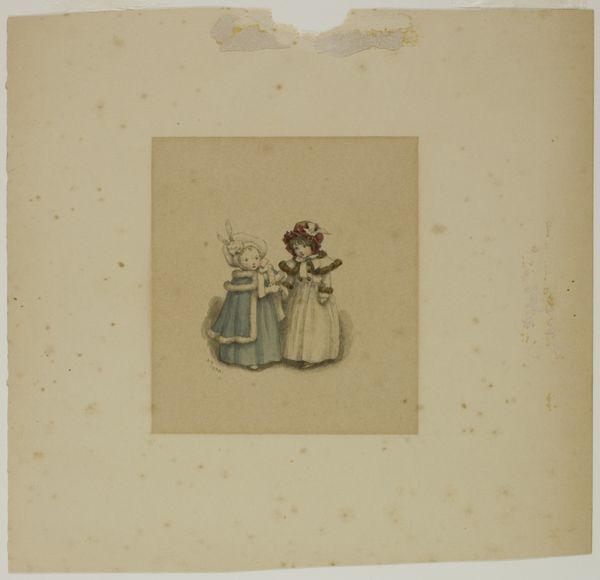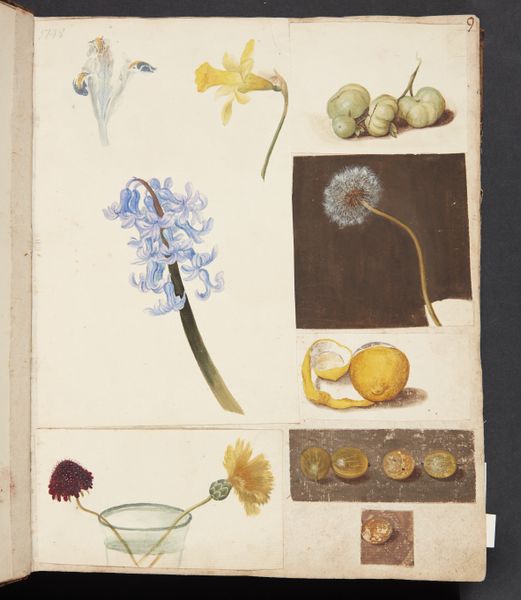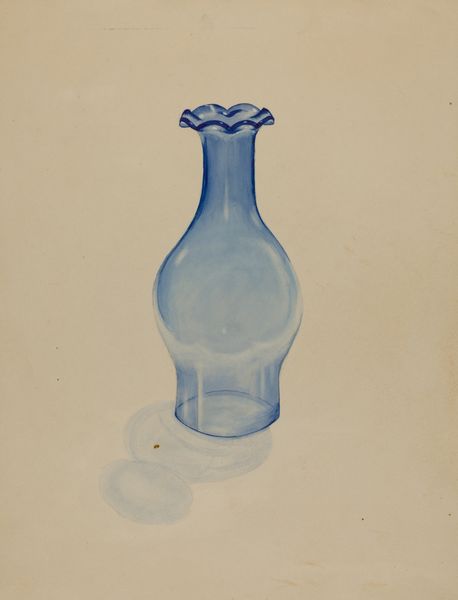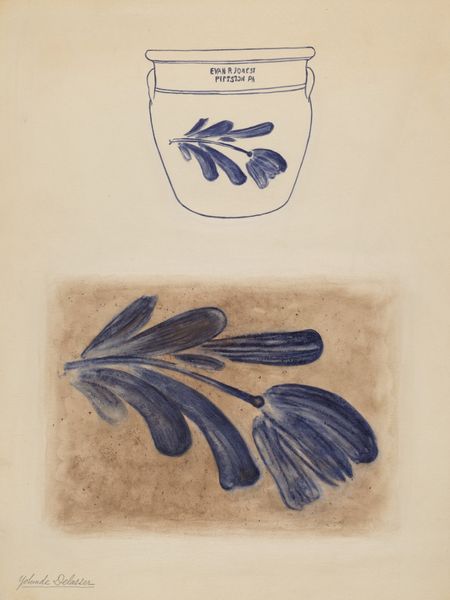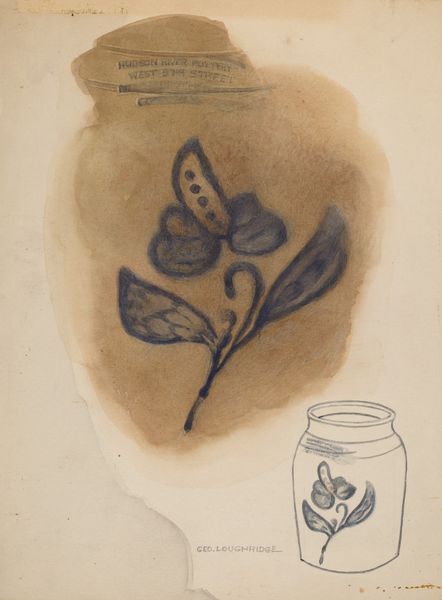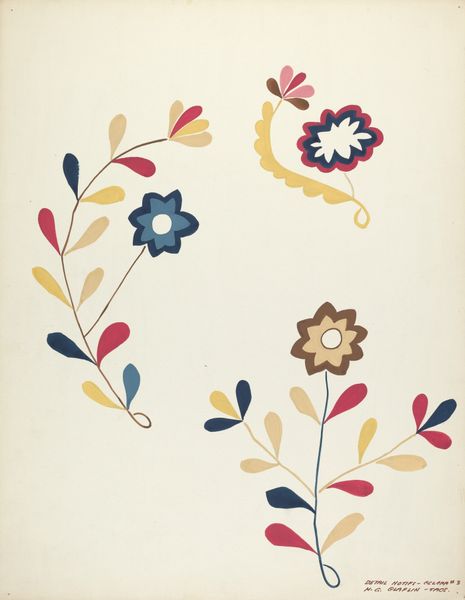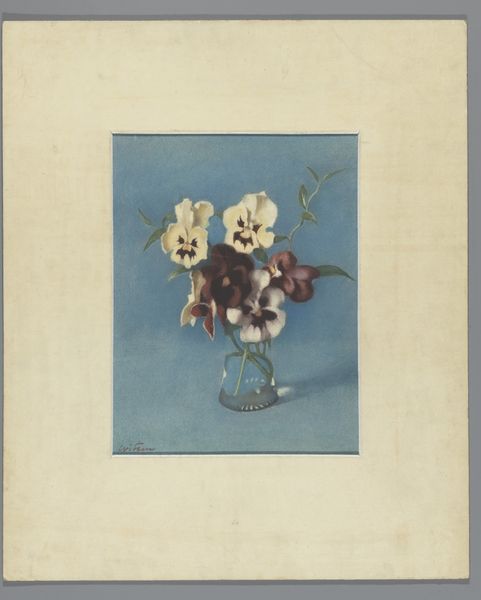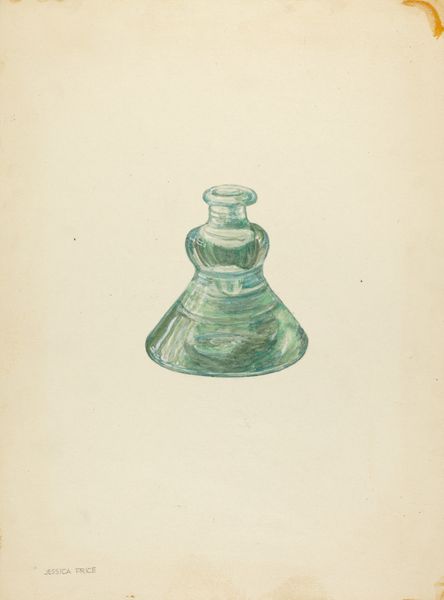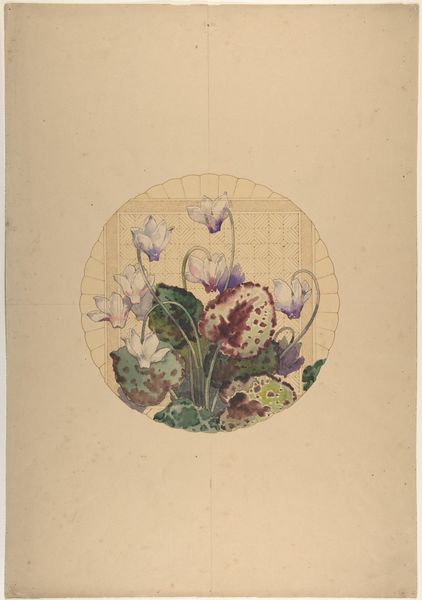
Studie af blomst i glas med vand og hvide asparges 1748 - 1759
0:00
0:00
drawing, coloured-pencil, gouache, watercolor
#
drawing
#
coloured-pencil
#
gouache
#
watercolor
#
coloured pencil
#
rococo
Dimensions: 281 mm (height) x 227 mm (width) (bladmaal)
Editor: So, here we have Johanna Fosie’s "Study of a Flower in a Glass with Water and White Asparagus," created sometime between 1748 and 1759. It's rendered with colored pencil, gouache, and watercolor. It has this lovely, delicate feel… What symbolism or deeper meaning do you find in this image? Curator: It’s tempting to see the flower, bravely presented in a glass, as a symbol of transient beauty, right? Especially set against the fading asparagus. But consider the cultural context: flower painting in this period, particularly by women artists, often spoke to a quiet but powerful negotiation of status and knowledge. Editor: Status and knowledge? How so? Curator: The image may have operated as more than a pretty thing; through its intricate depiction, a whole history of the world is being displayed as if claiming some authority through observation. Why those specific flowers, in that specific vessel? Where did it come from, what does it represent? And why pair with asparagus? This juxtaposition evokes the cyclical, ephemeral qualities of both. Asparagus tips are a spring delicacy, quickly gone and thus precious; their depiction prompts reflection on nature's cycles of bounty and the fleeting moments we should savor. Editor: So, it's less about just the beauty of the flower and more about…understanding it, categorizing it, possessing a certain type of intellectual power. It changes how I see it entirely. Curator: Precisely! It’s about claiming authority over knowledge of the natural world. Every careful brushstroke embodies a larger conversation around botany, scientific accuracy, and feminine intellectual spaces. The drawing carries these symbols while questioning them. Editor: I see it now - thanks to your perspective I can feel how loaded this innocuous-looking still-life really is! Curator: Absolutely; hopefully now our listeners do as well!
Comments
No comments
Be the first to comment and join the conversation on the ultimate creative platform.

